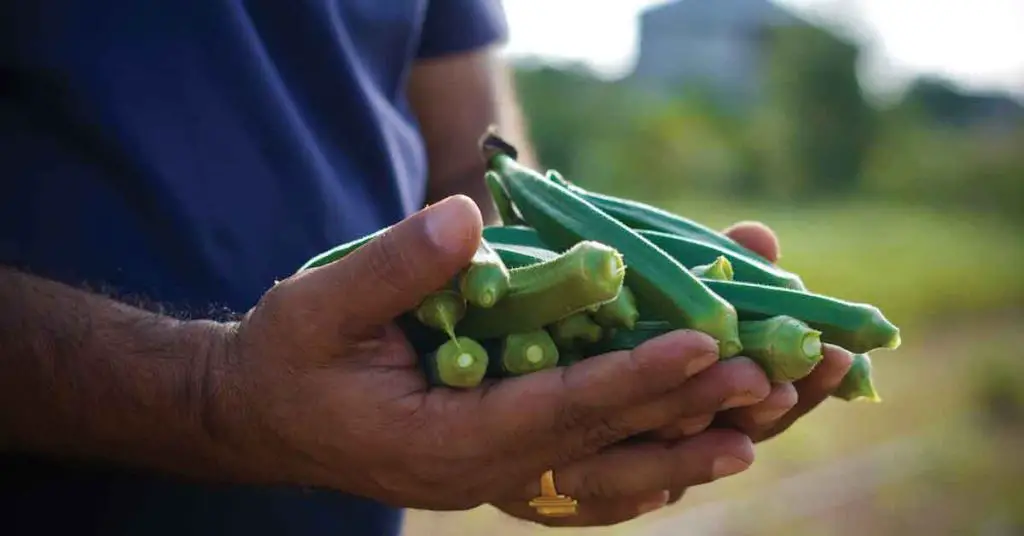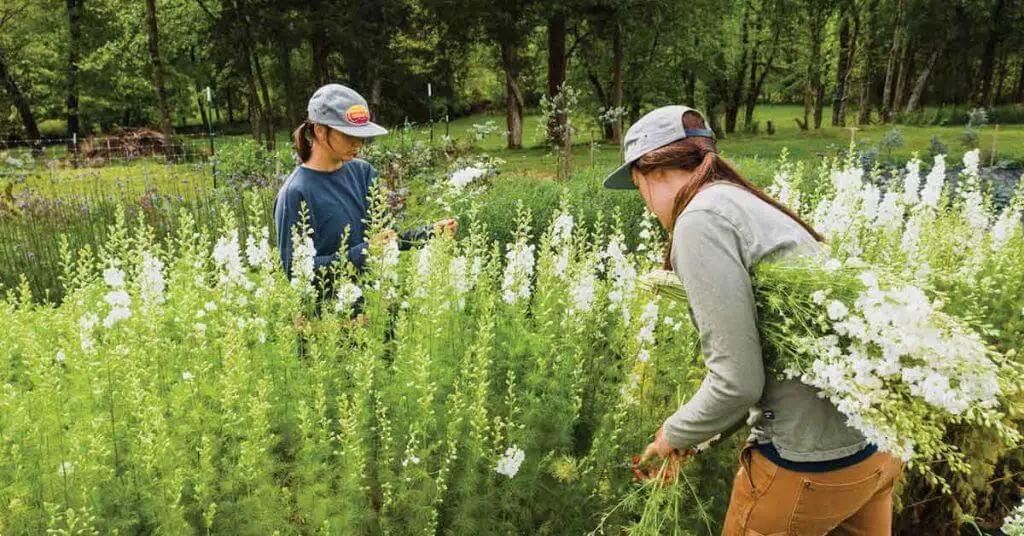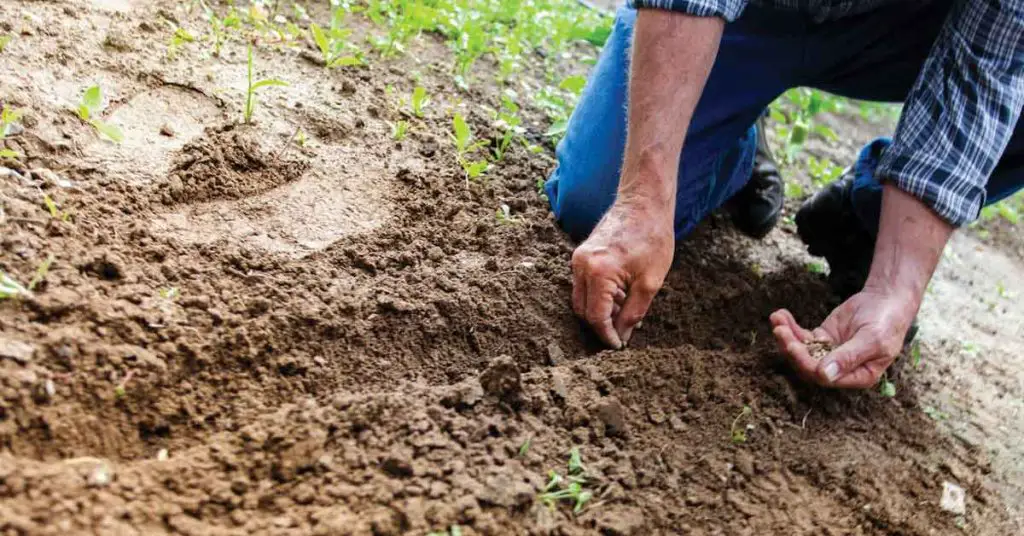Introduction
In this article we will discuss the importance of drought-tolerant vegetables in sustainable gardening. The idea of drought-tolerant vegetables is gaining more attention when water conservation is becoming more important. As their name suggests, these vegetables are remarkably resilient to drought and may flourish in dry environments. Many plants have evolved to thrive with less water, from hardy root vegetables to certain vigorous greens.
Overview of Drought-Tolerant Vegetables
Crops that can withstand drought are essential for sustainable gardening and farming. Given the unpredictability of weather patterns and the increasing frequency of dry spells, the capacity to manage a healthy and productive garden is essential. Vegetables that can withstand drought allow growers to continue producing food under less-than-ideal conditions, ensuring food security, and fostering sustainability. Gardeners can also lessen their environmental impact and contribute to the planet’s health by using less water.
Importance of Drought-Tolerant Vegetables in Sustainable Gardening
The interesting world of drought-tolerant vegetables will be explored in this article. We’ll learn what makes a vegetable drought-tolerant, how to choose and nurture these tough plants, and how to make the most of them in your garden. This article is here to help, whether you’re an experienced gardener wishing to broaden your knowledge or a novice looking to establish a garden in a dry environment. Let’s look closer at this robust planet to understand better how drought-tolerant vegetables improve our gardens and contribute to a sustainable future.
In addition to using drought-tolerant vegetables, another strategy for sustainable gardening involves planting cut-and-come-again vegetables. These varieties allow you to harvest continually from the same plant, contributing to a more efficient and sustainable garden.
Understanding Drought Tolerance of Vegetables
When we explore the world of drought-tolerant vegetables, we’re looking into the different strategies some plant species have developed to endure, and even sometimes thrive, underwater shortages.
What Makes a Vegetable Drought-Tolerant?
An understanding of the fundamentals of plant physiology is necessary to comprehend what makes a vegetable drought-tolerant. Certain characteristics enable plants to either increase water uptake or minimize water use. For instance, some plants have tiny leaves to reduce water loss or deep roots that allow them to access moisture deep within the soil. Some people may have thick, waxy skin that prevents evaporation. Some vegetables that can withstand drought, such as the interesting “resurrection plants,” can even go dormant during drought before awakening upon the coming of rain.
Advantages of Cultivating Drought-Tolerant Vegetables
Growing vegetables that can withstand drought has several advantages, particularly given how the climate changes. These resilient vegetables offer resilience under erratic weather circumstances, first and foremost. Even in times of poor rainfall or water restrictions, they can aid in ensuring a plentiful harvest.
However, many plants have uses outside of dry areas and times of drought. They are also great options for gardeners who want to practice water conservation as a part of environmentally friendly gardening. These less water-intensive vegetables can help gardens use less water overall, advancing sustainability objectives.
Many drought-tolerant vegetables are deliciously distinct and allow you to diversify your diet and try out new recipes in addition to their water-saving benefits. Therefore, by including drought-tolerant vegetables in your garden, you may promote water conservation, guarantee consistent harvests, and broaden your gastronomic horizons.
Selecting Drought-Tolerant Vegetables
Your garden’s selection of the best drought-tolerant vegetables depends on several variables.
Criteria for Selecting Drought-Tolerant Vegetables
Of course, how well the veggie can resist dry conditions ranks first. This is mostly governed by its innate characteristics that enable it to withstand water scarcity and its natural water needs. Don’t stop there, though! Additionally, it’s crucial to consider your family’s culinary preferences, the temperature in your area, and the space needs of the plant.
The harvesting season is another thing to take into account. Some drought-tolerant vegetables can mature quickly, allowing them to finish their life cycle before the drought worsens. If drought conditions are regular in your area, fast-growing cultivars are generally a wise choice.
List of Few Drought-Tolerant Vegetables
Let’s look at some specific vegetables that can withstand drought that you might want to consider for your garden:
- Okra: This plant thrives in the heat and is more resilient to dry weather than others. It’s also a multipurpose addition to your kitchen!
- Swiss Chard: This crop is a cut-and-come-again crop, which means you may pick it repeatedly throughout the season in addition to having lovely, multicolored stems.
- Eggplant: Once established, eggplant can endure dry circumstances but needs a long, warm growing season.
- Jerusalem Artichoke: Also known as sunchoke, this vegetable has tubers that, because of their extensive root systems, are particularly drought-tolerant.
- Cowpeas: commonly called black-eyed peas, are drought-tolerant plants that also fix nitrogen in the soil to increase the fertility of your garden’s soil.
- Tomatoes: Many tomato types can withstand dry spells, though they require frequent watering to become established.
Techniques for Growing Drought-Tolerant Vegetables
To grow vegetables that can withstand drought, it’s important to choose suitable plants and utilize effective growing methods to maximize their tolerance.
Optimum Procedures for Planting
The right moment must be chosen for planting. When planting, try to do so early in the season when there is usually more rain. This increases the likelihood that your vegetables will develop robust root systems before the start of the dry season. Seedlings should be used rather than direct seeding to establish plants before water becomes scarce.
Watering Techniques for Drought-Tolerant Vegetables

It might be a bit of a balancing act to water vegetables that can withstand drought. These plants still require water to flourish, even though they can tolerate low moisture levels better. Deep, sparing watering is one method that works. The plant roots will grow deeper into the soil where it is cooler and stays moist for longer if you water it less regularly but more thoroughly. Keep in mind that watering in the morning will reduce evaporation losses.
Soil and Mulching Techniques for Water Conservation
Water retention can be dramatically impacted by the mulch you apply and the soil type in your garden. The best soil is loamy because it has a high capacity to retain water, drains well, and promotes air circulation. If your soil is sandy, adding organic matter like compost or well-rotted manure will increase its ability to retain water. Add coarse organic matter or sand to increase the drainage of clay soil.
Regarding water saving, mulching is a gardener’s best friend. Straw, wood chips, or shredded leaves are examples of organic mulches that cover the soil’s surface to prevent water evaporation, control weed growth that competes for moisture, and maintain a constant soil temperature. These mulches also strengthen the soil’s structure and water-holding capacity as they decompose.
Using these gardening methods, you can greatly improve your drought-tolerant vegetables’ ability to withstand dry spells and enhance your yields using less water. Remember that even drought-tolerant vegetables require some water, so maintaining your care and attention is still essential to their success.
Management of Pests and Diseases for Drought-Tolerant Vegetables
Effective pest and disease management is key in growing vegetables that can withstand drought. Dry climates can present difficulties and draw bugs and diseases.
Common Pests and Diseases in Drought Conditions
Some pests, such as beetles and spider mites, flourish in hot, dry environments. Your plants may suffer harm from them, which could restrict their growth or result in their death. Similarly, some fungi infections may survive in dry soil and target plants that are stressed from a lack of water.
Techniques for Controlling Diseases and Pests
Fortunately, you may use several methods to maintain a healthy garden even during a drought.
- Regularly checking your garden is one of the best strategies to control pests and diseases. This enables you to identify any possible difficulties beforehand and take action before they worsen. Make it a routine to check your plants for pests or illnesses at least once every week.
- Integrating pest management (IPM) incorporates several methods to effectively manage pests. To disrupt the lifecycle of pests and illnesses, this includes employing beneficial insects that feed on pests, crop rotation, and using organic or chemical pesticides as necessary.
- Maintaining adequate plant spacing is crucial for disease management. The spread of illnesses can be halted by providing adequate airflow around plants. To decrease the risk of fungal illnesses, try to water your garden in the morning so the leaves have time to dry out during the day. If a plant does contract the illness, get rid of it right once to stop it from infecting other plants.
Keep in mind that healthy, well-maintained plants are less prone to fall victim to pests and illnesses. You can keep a fruitful and healthy garden even in dry weather by choosing crops that can withstand drought and employing the earlier-discussed gardening strategies.
Harvesting and Storing Drought-Tolerant Vegetables
The next stage is properly harvesting and preserving your vegetables that can withstand drought after successfully producing them. This is a crucial step in the process and is required to maximize the benefits of your labor-intensive efforts.
Suggestions for Successful Harvesting
First, it’s crucial to understand when to harvest each kind of vegetable. Some crops that can withstand drought should be harvested at a specific size, like squash and peppers, while others, like beans and tomatoes, should be harvested when they reach a specific color. Recall that timing is everything. If you harvest your vegetables too soon, they cannot mature. If they are harvested too late, they could turn overripe and unpleasant. As a result, be careful to become familiar with the indicators of vegetable maturity.
Harvest your vegetables carefully to prevent bruising or other damage. Instead of yanking or twisting vegetables off the plant, which might harm them, using a sharp knife or pruners is recommended. Additionally, to lessen stress on the plants and to keep your vegetables fresher longer, try to harvest in the cool of the morning or evening.
Best Practices for Storing Harvested Vegetables
After they are picked, your vegetables must be stored properly to keep them fresh and maintain their nutritious value. Vegetables require varied amounts of storage. While some produce, such as tomatoes and peppers, should be kept at room temperature, others, such as beans and squash, keep their freshness longer when kept in a cool, dark environment.
Vegetables should not be washed until right before use since moisture might promote deterioration. If you can’t consume all your fresh vegetables before they go bad, think about canning, freezing, or dehydrating them. Doing this lets you eat your own drought-tolerant vegetables all year.
Never forget that producing your own vegetables is about giving you and your family access to healthy, fresh food. You can increase their shelf life and make the most of your gardening efforts by harvesting and storing them properly.
Successful Gardening with Drought-Tolerant Vegetables: Success Stories
It’s usually beneficial to look at successful real-world examples to fully comprehend the potential and viability of drought-tolerant crops. They serve as a source of inspiration and aid in solidifying the ideas we’ve been discussing.
Take the situation of a homesteader in the arid state of Arizona as an example. They’ve successfully grown a garden mostly made up of drought-tolerant plants despite having less rainfall than the national average. Okra, cowpeas, and sweet potatoes are some cultivars that have flourished in the scorching desert heat, giving the homesteader a plentiful crop year after year. Their trick? Selecting vegetables that have been shown to withstand the heat in Arizona, deep watering once a week, and thoroughly mulching the soil to maintain moisture.
A community garden in Southern California has similarly embraced drought-tolerant growing on the other side of the country. Under the unrelenting sun, many herbs, tomatoes, and zucchini grow well here. Despite the drought, the gardeners use composting, water-efficient irrigation techniques, and companion planting to enhance their productivity.
Key Takeaways from Successful Gardens
Several important lessons can be learned from these examples.
- First, it is crucial to select the appropriate types. Vegetables that can endure dry circumstances and high temperatures alone should be chosen after research.
- Second, it’s important to use wise watering techniques. Ensure your water use is effective and focused, whether by drip irrigation, deep watering, or another technique.
- Third, mulching and soil preparation are important for maintaining your plants’ health and preserving water.
- Finally, remember that diversity is still conceivable among vegetables that can withstand drought. From tomatoes to sweet potatoes, okra to zucchini, you may eat diverse produce from your water-smart garden.
Recap: Importance of Drought-Tolerant Vegetables in Sustainable Gardening
As we end our in-depth exploration of the world of drought-tolerant vegetables, it is abundantly evident how important they are to sustainable gardening. In today’s ecologically conscious society, these resilient types not only produce nourishing food, but they also do so while using less water, creating a win-win situation. We’ve looked at what makes a vegetable drought-tolerant, investigated several potential varieties, and provided tips for effective pest management, growing, harvesting, and storage.
We went from comprehending the fundamentals of drought tolerance to putting these ideas into practice in our gardens. We also looked at examples from everyday life to demonstrate how these ideas might be useful and practical. Cultivating drought-tolerant vegetables is a worthwhile and successful activity supporting environmental sustainability and food security.
Give It a Go!
It’s now up to you to put these concepts into action. Select a few types that work with your preferences and climate, then get planting after preparing the soil and setting up your irrigation system. Remember that every action you take to cultivate more environmentally friendly gardening techniques counts. Don’t let the initial difficulties dissuade you. Consider them as educational opportunities instead. Growing drought-tolerant vegetables is not only rewarding, but it is also a significant step in the direction of a more sustainable future. Enjoy your garden!
Disclaimer: The information provided in this article is for general informational purposes only and is not intended to be a substitute for professional advice. The author of this article does not claim to be an expert in homesteading and the information provided should not be relied upon to make decisions about your own homesteading journey. Please do your own research and consult with a qualified professional before making any decisions about your homestead.
Share via:
Shaun Alexander is the main writer and editor for HomesteadingSimple.com. With a strong passion for homesteading and sustainability, Shaun has dedicated his life to learning and sharing information about a simple, fulfilling existence tied to the land. His expertise ranges from gardening and livestock management to off-grid living and DIY projects, reflecting the diverse skills necessary for a successful homesteading lifestyle. Shaun’s goal is to inspire and educate others about the possibilities of homesteading, whether in rural, suburban, or urban settings, and to provide practical advice and tips for both beginners and seasoned homesteaders. He believes in a future where more people return to their roots, embracing a life of self-sufficiency and harmony with nature.





